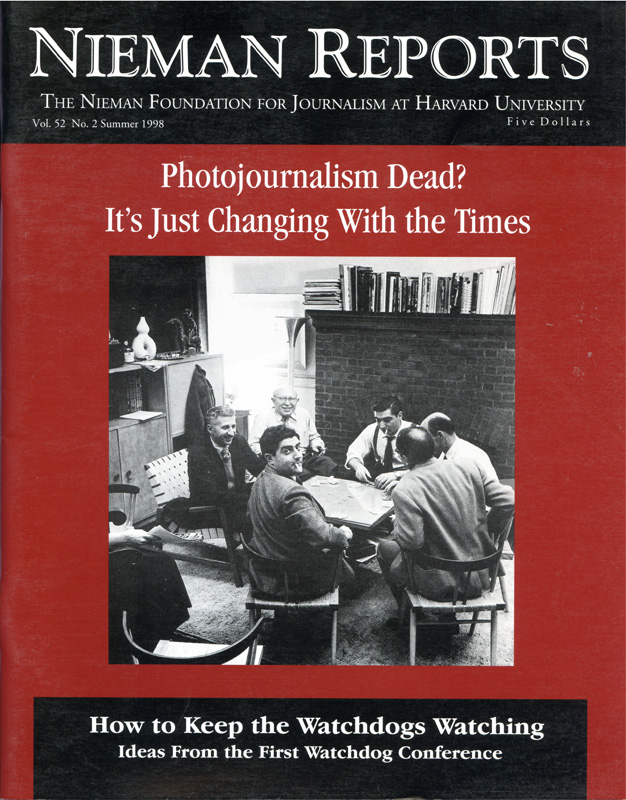In 1990, as The Associated Press made its transition to digital processing of its images, Vincent Alabiso, Executive Photo Editor, released its unequivocal internal policy regarding photo manipulation. “The straightforward guidelines must be met by AP’s wordwide staff,” he wrote. “As imaging technology becomes more sophisticated, more accessible and more seductive, basic journalistic tenets remain the standard. Simply put, pictures, like words, must always tell the truth.” Here is the policy memorandum:
Electronic imaging raises new questions about what is ethical in the process of editing photographs. The questions may be new, but the answers all come from old values.
Simply put, The Associated Press does not alter photographs. Our pictures must always tell the truth.
The electronic darkroom is a highly sophisticated photo editing tool. It takes us out of a chemical darkroom where subtle printing techniques, such as burning and dodging, have long been accepted as journalistically sound. Today these terms are replaced by “image manipulation” and “enhancement.” In a time when such broad terms could be misconstrued, we need to set limits and restate some basic tenets.
The content of a photograph will NEVER be changed or manipulated in any way.
Only the established norms of standard photo printing methods such as burning, dodging, black-and-white toning and cropping are acceptable. Retouching is limited to removal of normal scratches and dust spots.
Serious consideration must always be given in correcting color to ensure honest reproduction of the original. Cases of abnormal color or tonality will be clearly stated in the caption. Color adjustment should always be minimal.
In any instance where a question arises about such issues, consult a senior editor immediately.
The integrity of the AP’s photo report is our highest priority. Nothing takes precedence over its credibility.
Electronic imaging raises new questions about what is ethical in the process of editing photographs. The questions may be new, but the answers all come from old values.
Simply put, The Associated Press does not alter photographs. Our pictures must always tell the truth.
The electronic darkroom is a highly sophisticated photo editing tool. It takes us out of a chemical darkroom where subtle printing techniques, such as burning and dodging, have long been accepted as journalistically sound. Today these terms are replaced by “image manipulation” and “enhancement.” In a time when such broad terms could be misconstrued, we need to set limits and restate some basic tenets.
The content of a photograph will NEVER be changed or manipulated in any way.
Only the established norms of standard photo printing methods such as burning, dodging, black-and-white toning and cropping are acceptable. Retouching is limited to removal of normal scratches and dust spots.
Serious consideration must always be given in correcting color to ensure honest reproduction of the original. Cases of abnormal color or tonality will be clearly stated in the caption. Color adjustment should always be minimal.
In any instance where a question arises about such issues, consult a senior editor immediately.
The integrity of the AP’s photo report is our highest priority. Nothing takes precedence over its credibility.



